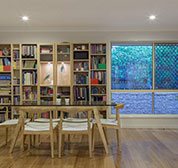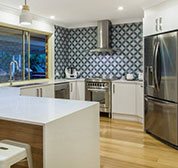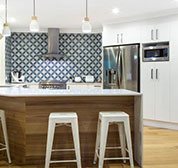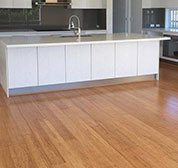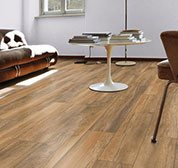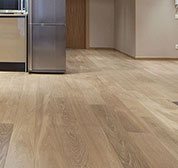Hot Press Vs Cold Press Bamboo Flooring
Understanding the Types of Manufacturing Processes for Bamboo Flooring Within this article we try to explain some of the main differences between the two most common methods of strand woven bamboo manufacturing and what you need to look for when making your decision.
There has been lots of debate about the two main bamboo flooring manufacturing methods (hot-press and cold-press). But which is the best? Let’s have a look. Both types are strand woven, meaning the products are a result of combining split and crushed bamboo fibres. These long strands are woven together, compressed and stabilized using resins and adhesives using either (sometimes both) hot or cold pressed manufacturing processes. Variations in construction can be present in both methods as different manufacturers may have slightly different techniques, machinery, adhesives and quality control procedures. These things perhaps, create the biggest differences in terms of quality and durability. In other words, both methods can produce both high quality but also substandard products depending on these factors.
Hot-press is a more simple and cheap method. It is produced in large sheets, oven baked at approximately 130C for up to an hour, placed under pressure and left to rest for only one day.
Pros
- Quick to produce
- Cheaper
Cons
- Density variations
- Moisture variations
- Lower moisture tolerance
Cold-press (Green Future Flooring) is much more complex and time consuming. Produced by compressing fibers in large block moulds under huge pressures and curing them in an oven up to 110C. They are then left to condition for about two weeks before being cut. Depending on the manufacturer they are then sometimes conditioned and dried for a further two weeks before being sanded and primed.
Pros
- Even Density
- Higher moisture tolerance
- No cold joints using modern methods
Cons
- Generally more expensive to produce
- Can lead to variations in board colour (more natural look).
Note: Some inferior products can contain a cold joint where the joining system is attached later which can lead to a weak point and cracking of the boards. Most modern cold press manufacturers don’t use this method anymore and the joining system is now cut directly into the board making it structural much stronger and durable
Conclusion
As both methods are becoming more popular, they are getting better. Cold-press has perhaps made the biggest leaps as its primary focus is quality, where the hot-press is low cost and production speed. High quality cold-press bamboo is rested and conditioning for much longer which allows the fibers of the bamboo to make a more durable join and increase dimensional stability.In reality both manufacturing methods have come a long way since this type of flooring was first developed, so a more relevant question to consider is the actual implementation of each manufacturing method. How does the factory ensure strict and precise production methods? How does the factory control and record each stage of production including drying and compressing temperatures, curing times, storage periods and so on? The only way you can really be assured of this is the quality control procedures the manufacturers have in place and how much emphasis they place on this.
The general consensus is also that in subtropical climates (like Queensland and most other areas of Australia) the cold press method is recommended. This is because the bamboo is cured (acclimatized) for much longer, making the moisture levels more consistent with air outside, reducing any drawing in of moisture once the product is out of the box and on your floor.
Additional things to consider are the coating systems, colour range, warranties, service, emission ratings and product reliability. Not all bamboo is the same so consideration and research should be done into all areas of the products rather than just one area of manufacturing.








